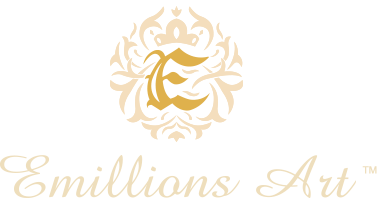May is Photography month! Every year around this time, we at Emillions Art like to highlight a photographer and chat with them about fine art imagery and the creative process.
This year’s installment features Portuguese artist, Ricardo Jorge Reis.
If you take some time to peruse the portfolio of this unique and visionary artist, you’ll find yourself immersed in deeply thoughtful, layered exposures which draw you deep into a world somewhere between the real and the fantastic.
The piece, A Day in London 21, is a prime example of the experience of viewing the world through Reis’ eyes. One can easily travel the distance between the renowned city’s most famous landmarks in the space of a few moments.
The idea of layered exposures is not new, but in Ricardo Jorge Reis’ adept hands, the camera captures the three-dimensional world in all of its2 depth and beauty on a two-dimensional plane.
Reis graciously took some time to share his thoughts on photography and fine art. Please enjoy this interview with Ricardo!
EA: How long have you been passionate about photography?
RJR: Photography has been my passion since 2005 when I started to take photographs every day, since my mother gave me my first camera. I’ve always loved art and photography but only since I started taking pictures regularly did my passion really sink in.
EA: What inspired you to experiment with your collage approach to photographic art?
RJR: I like to use multiple exposures mainly in black/white film because many times I’m seeing more than what is really happening. I do it so I can properly translate all my emotions and vision. When I look at something, I create a little story. So, this method, this technique, is my way of putting together the dream world and reality. And honestly, I like the challenge of having to really take time and elaborate, because I always create the finished image in my mind before picking up the camera. Then I can start the process of shooting and putting my vision to paper.
EA: What’s been your favorite urban landscape to capture?
RJR: My favorite urban landscape to capture was, without a doubt, Lisbon Surrealism. First of all, the exact spot where I was — absolutely amazing! I was on top of the arch looking at the biggest main square in Lisbon. It was a very difficult shot to make because it has four photographs in just one film window. I was loving what I was seeing but needed to make it my own—regarding how I see it and feel it.
EA: Who are your influences or iconic mentors?
RJR: I have a lot of photographers and artists I love who influence me one way or another: Philippe Halsman, Paolo Pellegrin, Henry Cartier-Bresson, Sebastião Salgado, and the Portuguese Eduardo Gageiro. Regarding painters, I love Gustav Klimt, Salvador Dali and Caravaggio.
EA: What project or projects are you working on right now?
RJR: I have plenty of good and exciting news and projects coming, I can’t tell you just yet, but I promise you will be the first ones to know as soon as possible… so stay tuned! That’s all I can say!
EA: We will be anxiously awaiting the announcements! As an aside, and for our readers who may be interested in the equipment side of your craft, what is your favorite camera?
RJR: My camera of choice is the Canon EOS 1 RS. I use it for my black/white film photography. It gives me plenty of possibilities and it’s robust so it’s perfect to go on adventures — to go explore.
EA: In your view, is photography so universally accessible and why?
RJR: It really is because of all the accessible technology these days. You can take photos with all kinds of smartphones, and everybody has one at least. And after you can post them on social media instantly and reach an audience of thousands of people. I still prefer to have my camera, I want and need to have the power of deciding everything in the process of taking a photograph, and on smartphones, they do a lot of the work for you. Everybody can take a good photograph. The difficult part is to be able to take a lot of good photographs every day. Practice makes perfect.
EA: What a fantastic insight. Art is universally accessible, but the places of recognition are reserved for those who do the long and difficult work of disciplining and honing their craft!
EA: What is the perennial appeal of photographic fine art?
RJR: I think fine art photography endures and will keep on doing [so] because you can make fine art photography from all kinds of subjects. From common landscapes to portraits, it’s still-life, but giving it your artistic touch. [In my view], photography is the most realistic art medium to represent reality. Everything can be made in a way that fits the fine art photography designation; that’s the major appeal.
EA: How did you come to meet Marlissa (Gardner, Emillions CEO) and Emillions Art?
RJR: I discovered Emillions Art and Marlissa several years ago online. I sent her my portfolio for review and she loved it. We started exchanging emails and finally I signed with them. Marlissa was one of the first to believe in me and in my work. (Thank you so much, Marlissa!)
EA: Describe your growth as an artist over the years.

Life in Bubbles 1, Lisbon
RJR: I think I have grown a lot as an artist. I’m always trying to [outdo] myself. I’m my worst and biggest critic, so I never have that feeling of a job all done and finished — and I’m glad I’m this way! I’ve changed regarding the choice of subjects and experimenting with techniques, but [I’m] still not done. I’m still going to experiment some more—many photographs and artworks in other mediums still to come!
EA: Well, we are so pleased to represent you and can’t wait to partner with you into the future as you continue your journey as an incredible photographic fine artist!
You can view all of Ricardo Jorge Reis’ available works on Emillions Art.






